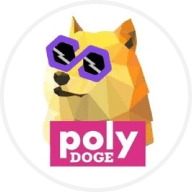Apariția Ethereum a revoluționat piața cripto, deschizând calea pentru dezvoltarea de aplicații descentralizate (dApp-uri). DappRadar (RADAR) este o platformă dedicată oferirii de informații valoroase despre lumea dApp-urilor. Prin furnizarea de date și analize cuprinzătoare, DappRadar își propune să sporească transparența și să împuternicească utilizatorii să navigheze în peisajul aplicațiilor descentralizate aflat în evoluție rapidă.
Ce este DappRadar
DappRadar este o platformă bazată pe blockchain care oferă date și statistici de piață dApp exacte și în timp util. Cu misiunea de a combate informațiile înșelătoare, DappRadar oferă utilizatorilor un site fiabil și cuprinzător de agregare a datelor de piață.
Datele dApp furnizate pe DappRadar sunt prezentate în clasamente și portofolii, în funcție de tipul și natura dApp-urilor. Platforma oferă, de asemenea, informații despre tokenii nefungibili (NFT-uri) și piața mai mare de finanțe descentralizate (DeFi).
Echipa DappRadar
DappRadar a fost fondată de Skirmantas Januśkas și Dragos Dunica, care sunt ambii director general și, respectiv, CDO. Proiectul bazat pe blockchain beneficiază, de asemenea, de experiența lui Patrick Barile (COO), care este atât expert în cripto și blockchain cât și parte a echipei fondatoare. DappRadar este susținut de unele dintre cele mai importante firme cu capital de risc din industrie, cum ar fi Blockchain Ventures, Nordic Ninja și Prosus Ventures.
Cum funcționează DappRadar
DappRadar operează printr-un site web ușor de utilizat, care este atât simplu de navigat, cât și complet gratuit de utilizat. Accesibilitatea sa l-a poziționat ca un instrument indispensabil pentru comercianții dornici să obțină informații mai profunde asupra pieței emergente dApp. Cu concentrarea sa globală și natura descentralizată, aplicația DappRadar aduce numeroase avantaje utilizatorilor săi.
Unul dintre punctele forte ale DappRadar este flexibilitatea sa. Utilizatorii au capacitatea de a urmări fără efort și în siguranță peste 3.000 de dApp-uri într-o gamă largă de blockchain. În plus, platforma oferă o funcție de urmărire a portofoliului care dă utilizatorilor puterea de a-și monitoriza câștigurile, pierderile zilnice și o vedere generală a deținerii lor.
Tokenul nativ al DappRadar: RADAR
Lansat în 2021, RADAR este tokenul nativ al proiectului. A fost conceput pentru a oferi utilizatorilor acces la toate caracteristicile interesante ale platformei. RADAR servește, de asemenea, ca un token de recompensă care trebuie împărțit proporțional între membrii comunității pentru contribuția lor la creșterea platformei.
În plus, RADAR este fundația ecosistemului organizației autonome descentralizate (DAO) DappRadar, acționând ca un token de guvernanță.
Tokenomia RADAR
Aprovizionarea totală de tokeni RADAR este de 10 miliarde, aderând la standardul ERC-20 pe blockchain-ul Ethereum. RADAR își propune să stimuleze implicarea comunității și să ofere stimulente pentru participarea activă, asigurând un ecosistem vibrant și durabil pentru toate părțile interesate.
Cum să mizați RADAR
Stakingul este un aspect important al ecosistemului DappRadar. Le permite deținătorilor de tokeni să câștige recompense specifice pentru blocarea fondurilor pentru o perioadă. Puteți miza RADAR fie ca membru obișnuit, fie ca membru PRO, ceea ce înseamnă că aveți opțiunea de a angaja minimum 5.000 și, respectiv, 30.000 de RADAR.
Pentru a începe, vizitați site-ul web DappRadar. Accesați fila „Staking” și alegeți o opțiune de membru preferată. Conectați-vă portofelul la rețea, selectați cantitatea de RADAR care urmează să fie mizată și finalizați procesul. Odată finalizat, puteți începe să câștigați recompense ca membru DappRadar.
Cazuri de utilizare RADAR
RADAR oferă deținătorilor acces la funcțiile platformei, servește drept plată pentru tranzacții, permite dezvoltatorilor să creeze aplicații și oferă drepturi de vot în ecosistem.
Distribuția RADAR
RADAR este distribuit după cum urmează:
- 40 la sută au fost alocați membrilor loiali ai comunității.
- 25,25% au fost rezervați pentru echipa DappRadar și pentru acționari.
- 24,75% au mers către trezoreria DappRadar, care acoperă cheltuielile de dezvoltare, strângere de fonduri, parteneriate și marketing.
- 10% au fost distribuiți în timpul airdrop-ului inițial.
Viitorul DappRadar
DappRadar este dedicat asigurării sustenabilității platformei sale prin furnizarea constantă de valori de piață valoroase și precise dezvoltatorilor, utilizatorilor și părților interesate de pe piața emergentă a dApp-urilor. Prin furnizarea de informații aprofundate, diagrame, statistici și date, DappRadar își propune să fie o sursă de informații de încredere și de încredere. Platforma se străduiește, de asemenea, să se adapteze continuu la tendințele pieței și să își îmbunătățească serviciile, asigurându-și relevanța și utilitatea pe termen lung.



















Rețele sociale